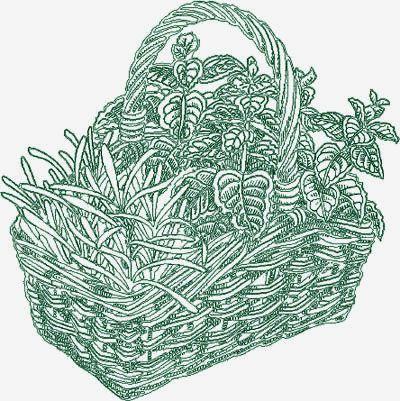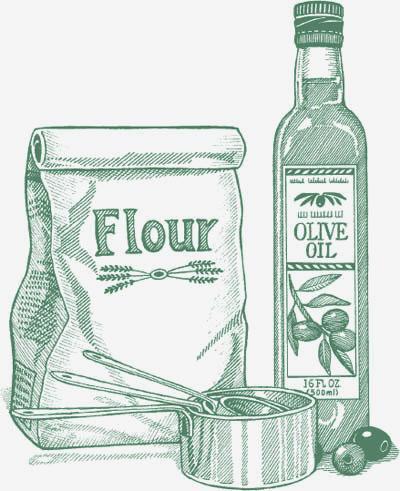Bread Machine (145 page)

 When the baking cycle ends, immediately remove the bread from the pan and place it on a rack. Let cool to room temperature before slicing.
When the baking cycle ends, immediately remove the bread from the pan and place it on a rack. Let cool to room temperature before slicing.
Bread Machine Baker’s Hint: What Size Loaf for Oven Baking?
If you decide to bake any of the kneaded and risen doughs from these recipes in your oven rather than in the machine, the following information about pan sizes will be helpful. If you have programmed the machine for the Basic or Whole Wheat cycles, just press Stop/Reset to clear after Rise 2, and unplug the machine. Or make the recipe on the Dough cycle. Turn the dough out onto a lightly floured work surface, form the loaf, and place it in or on the pan. Let rise, covered lightly with plastic wrap, at room temperature until doubled in bulk, about 45 minutes to 1 hour, before baking.
1-pound recipe fills one 8
1
/
2
-by-4
1
/
2
-by-2
1
/
2
-inch loaf pan
1
1
/
2
-pound recipe fills one 9-by-5-by-3-inch loaf pan
1
1
/
2
-pound recipe yields 1 medium or 2 small round or oval loaves
1
1
/
2
-pound recipe yields 2 baguettes
2-pound recipe fills two 8
1
/
2
-by-4
1
/
2
-by-2
1
/
2
-inch loaf pans
2-pound recipe yields 1 large, 2 medium, or 3 small round or oval loaves

CIRCLES, SQUARES, AND CRESCENTS
Pizzas and Other Flatbreads
Basic Pizza Dough
Semolina Pizza Dough
Whole Wheat Pizza Dough
Cornmeal Pizza Dough
Pissaladière
Torta Rustica with Rigatoni and Sausage
Suzanne’s Chicago-Style Deep-Dish Pizza
Sausage and Pepper Calzone
Cheese Pizza Torta
Garlic Focaccia
Roman Bread
Italian Whole Wheat Flatbread
Wine Focaccia
Schiacciata
Provençal Olive and Anchovy Flatbread
Grape Schiacciata Coffee Cake
Walnut Fougasse
La Pompe de Noël
Naan
Middle Eastern Lavash
Whole Wheat Pita
Lángos

I
remember the first time I heard a friend say she made the best pizza at home. I just didn’t think such a thing I existed. I mean, you need the special oven, and the technique of throwing the dough into the air to stretch it seemed very difficult. It just seemed beyond the home baker’s realm. Through my own experience, however, I found this wasn’t true, and what has been happening in the past ten years is nothing short of a phenomenon—everyone who loves to bake seems to be making pizza. When I was teaching cooking classes, making pizza was one of the most requested topics. What was more remarkable was that my students were able to turn out pizzas that were every bit as good as parlor-made, but with the added benefit that the pizzas could be made to please a host of finicky eaters. This flatbread is so popular that it warrants a chapter named largely for it. After all, I have had a number of bread machine owners tell me that pizza dough is the only thing they make with their machine.
Other flatbreads, too, have hit a nerve with amateur and professional bakers alike. The most prominent of these is focaccia, a very old, traditional homemade flatbread of Italy. Irregularly handshaped or pressed into a pan to form a large flat loaf, focaccia gets a simple coating of olive oil, herbs, or garlic. Made from dough with essentially the same proportions as pizza dough, focaccia differs from pizza in that it can be sweet or savory, and uses fewer—but a wider variety of—toppings. Its surface is dimpled, and indentations collect the olive oil that is drizzled over it. Focaccias have a thick breadlike texture because they are allowed to rise before baking, rather than the characteristic thin crispness of pizza, which is baked immediately after shaping and topping.
Other regions have their versions of focaccia, too. In a Paris pizzeria, I watched rounds of pliable, untopped pizza dough get tossed into a very hot wood-burning oven and emerge puffed up, to be sprinkled simply with olive oil and salt. A classic country bread, this is known by different names in different regions of Italy and France—
schiacciata
in Tuscany,
fugassa
in Venice,
fougasse
in Provence, and
pogne
in Savoie—so don’t be confused; the names can be used interchangeably. Because of their innate simplicity and ease of preparation,
focacce
lend themselves to endless delightful flavor variations and embellishments.
Focaccia is shaped in a wide variety of earthy, rustic sizes from round or oval to free-form or rectangular. The freeform version is often slashed in various places, giving the look of intricate cutwork, allowing the dough to open up into a decorative pattern referred to as a ladder. This is particularly popular in the
fougasse
of Provence. Restaurants and trattorias offer focaccia cut into finger-sized lengths for snacking or small five- to six-inch rounds cut horizontally for sandwiches. Uncut, the flatbread is studded with nuts or cheeses, olives or vegetables. Topped with fresh grapes or raisins, it is a traditional, and to many Americans unusual, favorite.
While pizza and focaccia are the most familiar flatbreads to their dedicated bakers and eaters, there is an entire family of flatbreads that comes from every culture in the world. They are ever-present daily bread in lands where fuel once was, or still is, a precious commodity, so these breads cook quickly. Flatbreads are eaten hot and fresh. While unleavened flatbreads, such as tortillas, are very thin indeed, the yeasted flatbreads to which this chapter is devoted can be anywhere from paper-thin, like lavash, to a few inches thick, as focaccia. In between are
naan
, the word for bread in much of Asia and India, with dozens of interpretations, and the ballooning pita, also basic daily fare eaten in much of the Middle East. These are kneaded doughs, which the bread machine prepares very nicely. These breads are meant to be eaten with meals, but are great for appetizers, too.
Since the doughs of pizza and flatbreads are so basic—water, flour, yeast, oil, and salt—take note of the quality and flavor of each ingredient you use, because you will definitely taste it. Some bakers use bottled spring water for their flat-breads. In some recipes, olive oil plays a very important role: use pure virgin and extra-virgin oils with different rich characters. For focaccia the olive oil is used not only in the dough, but for brushing the pan, drizzling on top before and after baking, and often for dipping later at the table. Organic stone-ground flours offer a unique, fresh wheat flavor.
Flatbreads need your touch to be finished to perfection. Since the shaping is the key to their taste and texture, they must always be baked outside of the machine.

Makes 2 thin 12- to 14-inch, one 14-inch deep-dish, four 8-inch, 6 individual crusts, or one 17-by-11-inch rectangular crust
S
ometimes I wonder whether the bread machine was invented just to mix and rise pizza dough, since so many bakers seem to do only that with their machines. After the dough cycle is complete, the dough is removed, shaped by hand, topped as desired, and baked off in your kitchen oven. Be sure to use unbleached all-purpose flour; it will be easier to roll out. You can use all or just a portion of the dough—it can conveniently be refrigerated overnight, or frozen.
1
1
/
2
- OR 2-POUND-LOAF MACHINES
1
1
/
3
cups water
1
/
4
cup extra-virgin olive oil
3
1
/
2
cups unbleached all-purpose flour
1 tablespoon sugar